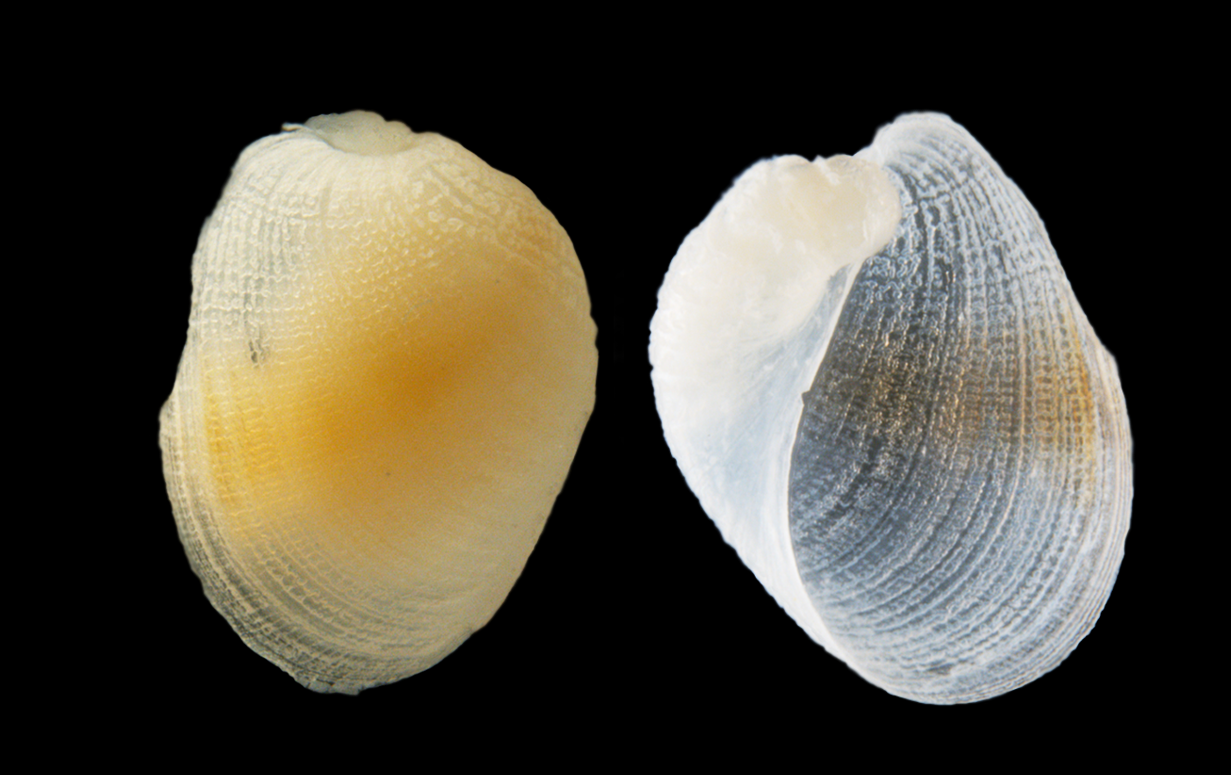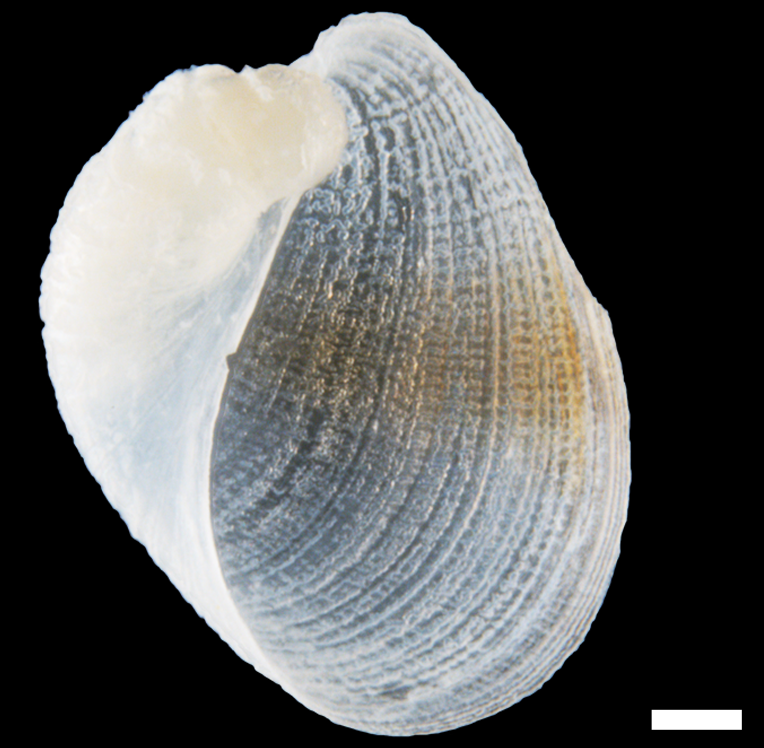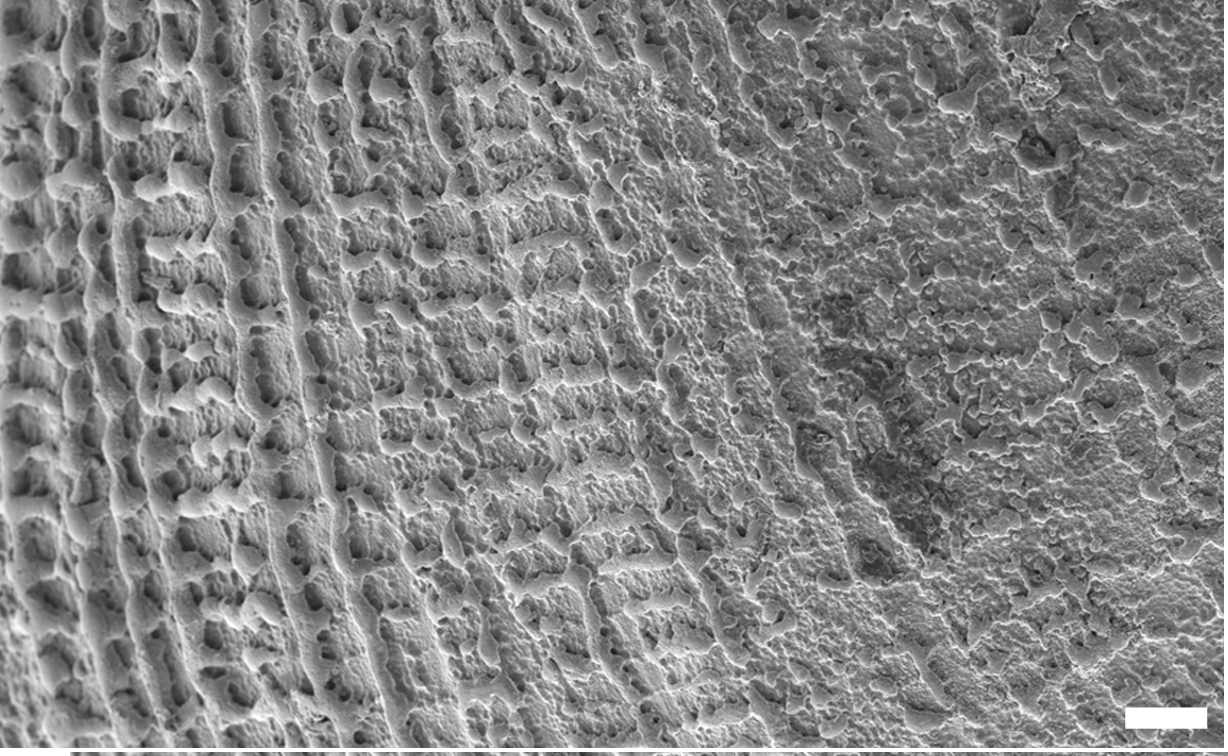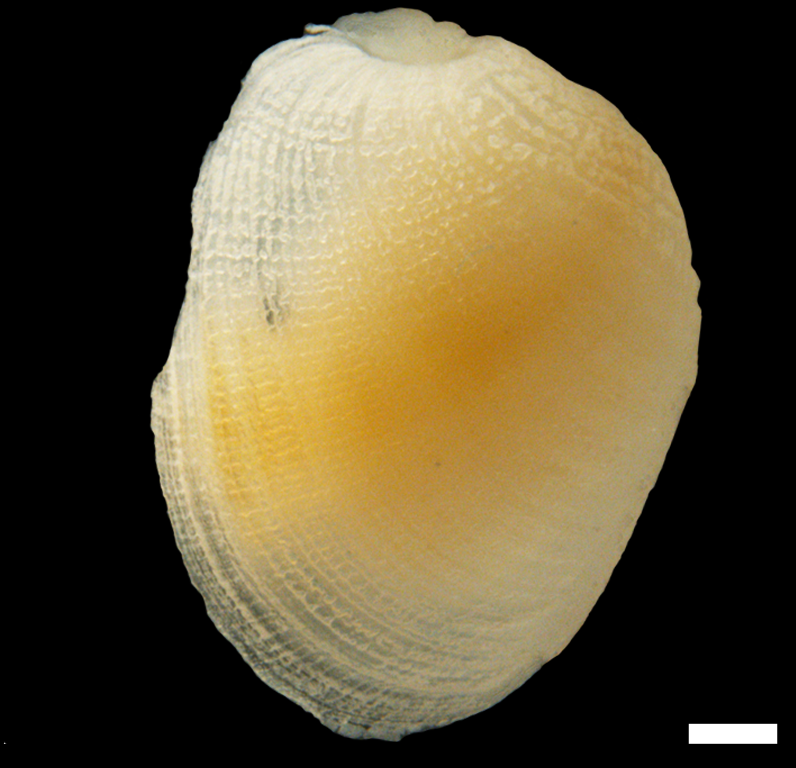Philine pruinosa
Shell description
The thin shell is internal and whitish-transparent in colour and may have brownish transverse bands. The shell is oval in shape when viewed from above. The opening is wide and the outer edge is smooth. The top of the shell (apex) is blunted and slightly sunken into the shell. The shell is slightly umbilicated. The surface is covered by a pattern consisting of crossing lines of raised dots that fuses to form a net or web like pattern. The size of the shell varies between 1.9–4.6 mm.
Animal description
The body is whitish and has clear white dots along the margins. The tissue covering the shell (mantle) has a notch at the rear (posterior notch). The larval kidney is visible trough the shell.
Anatomy
The radula consists of six outer lateral teeth and one inner lateral tooth on each side. The central (rachidian) tooth is absent. The outer lateral teeth have curved tips and a broad base. The inner lateral tooth has curved tips, a broad base and a smooth inner edge. The gizzard is a tubular sack, not surrounded by muscular fibers and there are no plates present.
Ecology
Found down to 400 m, on sandy mud, sand, and sand with shell-gravel.
Geographical distribution
In Norway from Lofoten southwards to the Swedish west coast, Tjärnö, Sweden (58°52′N). The Faeroes, British Isles and the Mediterranean Sea.
References
Ohnheiser LT og Malaquias MAE (2013). Systematic revision of the gastropod family Philinidae (Mollusca: Cephalaspidea) in the northeast Atlantic Ocean with emphasis on the Scandinavian peninsula. Zoological Journal of the Linnean Society 167(2): 273-326. DOI: 10.1111/zoj.12000.




